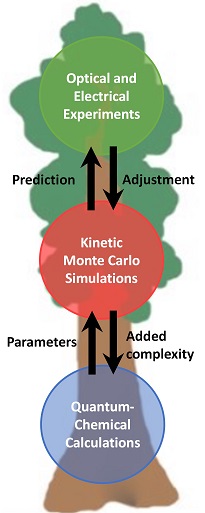Tackling exciton quenching to increase OLED efficiency: SEQUOIA project
To improve OLED lifetime and efficiency, researchers from the TU/e, VU, SCM, Simbeyond, and Merck join forces to reduce exciton quenching processes. The NWO-funded SEQUOIA project is led by Prof. Peter Bobbert of the TU/e (see news item).
A PhD student will work with Prof. Luuk Visscher and SCM to implement new accurate and fast methods to compute triplet-triplet annihilation (TTA) and triplet-polaron quenching (TPQ) rates with the Amsterdam Modeling Suite. Simultaneously, novel device-level modeling methods will be developed at the TU/e and Simbeyond, with which SCM already collaborates. The new simulation methods will be experimentally validated and improved, to establish an integrated toolchain enabling computer-accelerated design of improved OLED materials and stacks. A new project aims to include optical properties in the multiscale modeling workflow.
Maybe our other collaborations are also of interest?
